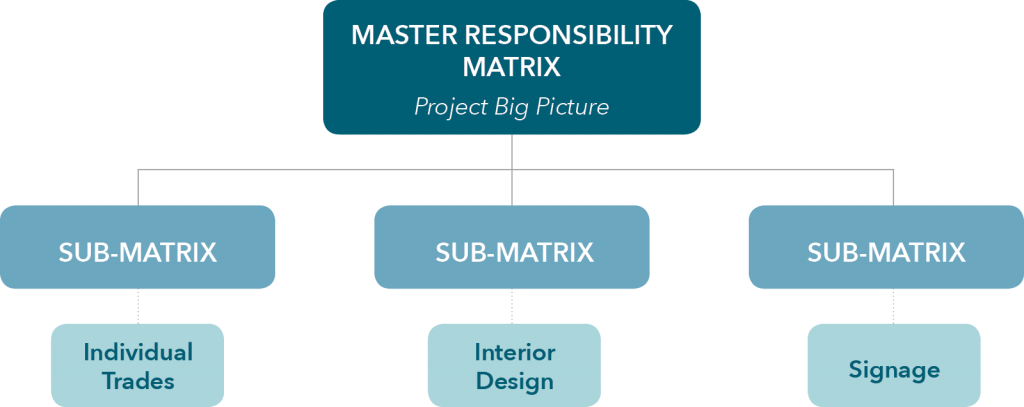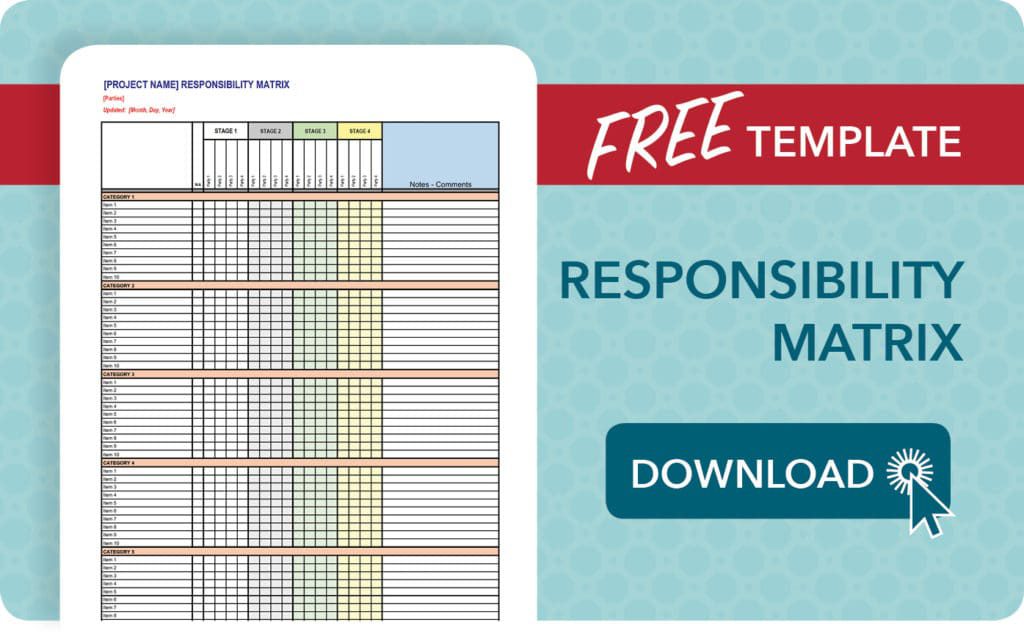What is a Responsibility Matrix?
The Responsibility Matrix defines all tasks associated with a project and the team member(s) responsible for completing each task. Progress is tracked in a linear chart with tasks listed on the vertical axis and responsible parties listed on the horizontal axis as shown in the downloadable template below.
What purpose does a Responsibility Matrix serve?
The purpose and uses of the Responsibility Matrix are numerous and can vary depending on the project. It can assist with establishing guidelines or processes to maintain accountability and address issues more quickly. Below are four ways you can use a Responsibility Matrix on your next project.
- Establish guidelines
Including every task associated with a particular project on the Responsibility Matrix allows the matrix to serve as a guideline for establishing the process that a project should follow from inception to completion. Over time, the tasks added to the matrix for a specific project are refined and improved upon each time they are used. With the successful completion of each project, more information becomes available that can help streamline the task list and identify the need for additions/omissions to the list. - Maintain accountability
One of the most important aspects of the Responsibility Matrix is its ability to keep team members accountable. If a question should arise regarding who manages a specific task, the matrix is referenced to clear up any confusion. This aids in avoiding conflicts, assists in managing expectations, and allows the team to work better together. - Track progress
The Responsibility Matrix is a living document that is evolving and changing. It serves as a checklist of completed tasks and a running tally of duties not yet completed. Therefore, frequent review of the matrix is prudent. - Anticipate tasks
With each project task listed on the Responsibility Matrix along with the corresponding team member responsible for its completion, the matrix addresses issues upfront rather than when they become problematic. This gives the project team, the freedom to take a proactive rather than reactive stance for discussing issues that threaten to derail or delay a project. It can also be used as a road map (of sorts) that can layout completed tasks with what lies ahead allowing the user to better prepare for future tasks.
How do you determine what goes on the responsibility matrix?
Every task and every team member associated with a project could, and should, be included on a Responsibility Matrix. This will improve the productivity of your team as every single task down to the tiniest detail will be assigned and completed in a timely manner. The more tasks that are added to the matrix, the less likely a critical duty will be forgotten and fall through the cracks.

[/et_pb_text][/et_pb_column][/et_pb_row][/et_pb_section]


